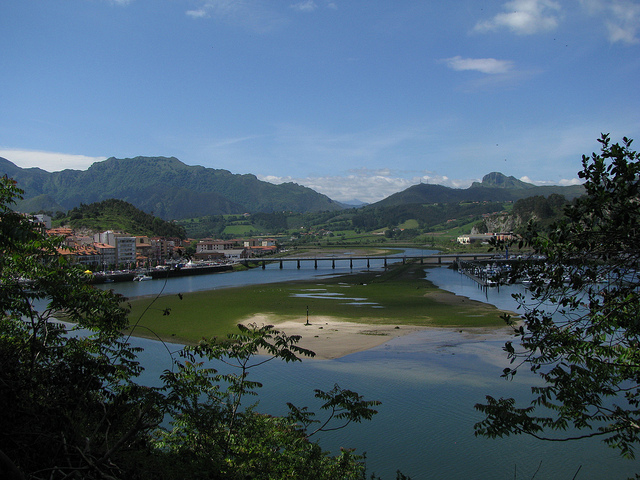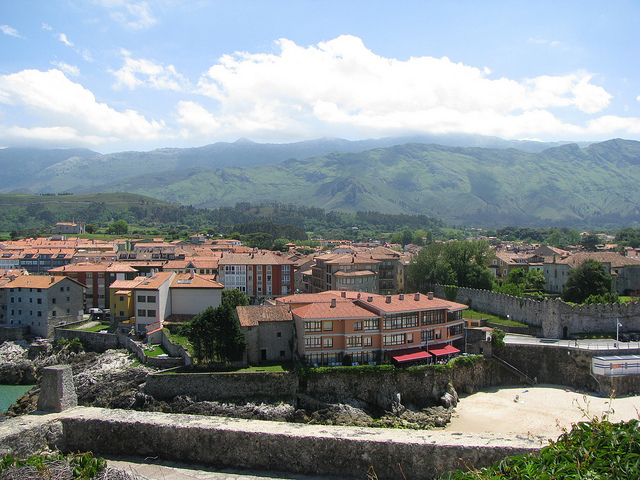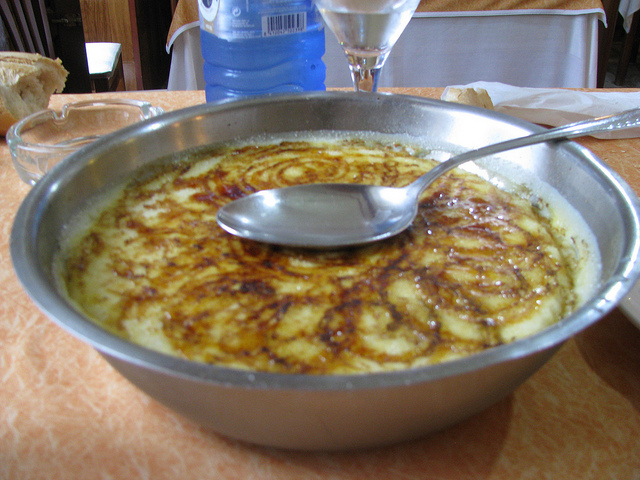I entered the mansion and was immediately impressed by the huge open space in the interior with balconies on the second and third floor. Every detail of this structure was opulent: the coffered ceiling, the intricate stucco work, the hand-made tiles, the woodwork of the balconies, the painted ceilings with their lavish chandeliers, the grand staircase and some of the original luxurious furnishings.

Some of the artifacts include the actual suitcases of immigrants
The museum houses artifacts and documents that came from the Asturian centres in Havana, Mexico City, Buenos Aires and Tampa. In many of these locations, Asturian descendants still have a strong community today, about a century after their ancestors originally emigrated. On the third floor of the mansion there is a room that is dedicated to the emigrant experience and shows posters of some of the ships that transported them from Spain to the New World. Many photos also show goodbyes between the emigrants and their friends and family who stayed behind.

One of many posters, advertising the voyage from Spain to the New World
Being an immigrant myself, the exhibits in this room really touched me. I too had left my home country of Austria at the tender age of 20 and moved to Canada where I have now been living for almost a quarter century. This room in the museum that focused on the sad goodbyes brought back so many memories of my own, and I could personally empathize with these emigrants who had to leave their loved ones behind. The Quinta Guadalupe has been illustrating the story of Asturian emigrants to the Americas since 1986 and is one of the most outstanding examples of Indiano architecture in all of Spain.

Asturian emigrants, waiting to be processed at customs upon arriving in the New World
But the town of Colombres boasts even more architectural jewels built by Indianos. The entire town has 12 villas that were constructed by former emigrants; even the town’s church and city hall were built by Indianos. At the Museum of Emigration I had picked up a brochure called La Huella Indiana (the “footprint of the Indianos”) that would guide me past all the various mansions and structures.

The City Hall of Colombres, also built by Indianos
Asturian emigrants would not only build lavish mansions upon their return to their homeland during their retirement years; many of them also improved the local people’s lives by building schools, roads, churches and cemeteries. The village of Colombres itself is a prime benefactor of Indiano generosity as the church, city hall, the electrical system and the public water supply were installed by Latin American emigrants who had returned back to their roots.

Gorgeous mansion built by one of the returning emigrants
The mansions that I walked by were all well described by plaques located in front, and the architecture was indeed impressive. The public library, for instance, is housed in a huge stone mansion from the 1920s. The oldest casa indiana is located on the main square and dates back to 1877.

The library of Colombres, also a casa indiana
With a much better understanding of the circumstances surrounding Asturian emigration, I headed back to the coast and stopped briefly at the municipal cemetery near the town of Noriega. Cemeteries are always unique and I just had to have a peak through the locked metal gate to see what this graveyard would look like.

The cemetery of Noriega
Then I stopped on a gorgeous lookout point near Pimiango where I had a phenomenal view over the Atlantic Ocean. The sun was beaming down on me now, but when I turned around and looked at the Picos de Europa mountains, I could see quite a few snow-covered peaks in the distance. Asturias is just such an amazingly picturesque destination.

The lookout near Pimiango




